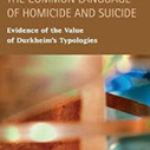The Palgrave Handbook Of Prison Tourism

Authors: Jacqueline Z. Wilson, Sarah Hodgkinson, Justin Piche, and Kevin Walby
Publisher: New York: Palgrave, 2017. 1051p.
Reviewer: Russ Immarigeon | July 2017
I have visited Alcatraz and the Eastern State Penitentiary. And I have heard of Boston’s Charles Street Jail, across the river from where I once lived, being turned into an upscale restaurant. I have also heard discussion about repurposing closing or closed juvenile or adult penal facilities. The Palgrave Handbook of Prison Tourism, however, takes me completely by surprise. I am deeply impressed with the extent of international attention to “prison tourism” that this volume brings to the forefront of our penological imagination.
Initially, editors of this project conceived a more modest publication of about 15 chapters. But, nudged by the publisher, other editors were added and the project headed into deeper waters. As published, several years later, this very hefty handbook contains 48 original articles written by 68 authors who focus on “prison tourism” in at least 20 countries or regions, including Australia, Canada, East Asia, France, Germany, Latin America, Northern Ireland, Poland, Russia, South Africa, Taiwan, the United Kingdom, and the United States.
As the Australian, British, and Canadian editors note, this collection covers conceptual, empirical, and methodological aspects of a field of study that focuses on “prison and jail tourism, penal museums, and other sites of carceral memorialization around the world.”
The articles in this handbook are divided into seven sections on ethics, rights, and penal spectatorship at prison museums and other memorialization sites; curation, commodification, and the re-tasking of decommissioned carceral sites into tourism destinations; representations of punishment such as depictions of captives and captors; representations of torture and death in prison museums; reflections on the intersection of colonialism, empire, imperialism, and state power; visitors’ experiences of prison tourism; and matters related to tourism and voyeurism at operating penal sites.
Individually and otherwise, the handbook’s articles cover a broad range of recurring themes, including “colonialism, ethics, welfare systems and the nexus between welfare and punishment, heritage studies, visitor experiences, torture and executions, prison labor, ‘ghost’ tourism, political imprisonment and persecution, prison conditions, human rights, the commodification of suffering, representations of incarcerated Indigenous peoples and ethnic minorities, prisoner writings, visual criminology and the penal gaze, green criminology and greenification, memorialization, ideologies and representations of capital punishment, and prison graffiti.”
Overall, this impressive gathering of international scholars and “prison tourism” site administrators constructively and critically address “the core aspects of the meaning-making process in prison tourism sites, from the efforts of community groups, historians, and entrepreneurs to re-erect these destinations for tourism and memorialization purposes to the interpretation of meanings of confinement by those who frequent them.”
“Penal tourism is as old as the prison,” states one author, and it is challenging to fathom why much attention has not previously been given these readily observable, or at least reportable, enterprises. At minimum, “sightseeing within operational total institutions” stemmed from the 17th century. In the U.S., the Eastern State Penitentiary’s opening in the early 1800s brought forth streams of visitors not just to gaze upon its prisoners but also to “marvel at its architectural boldness.” Among these visitors were “dignitaries, policy-makers, penal reformers, and prison architects.” Charles Dickens and Alexis de Tocqueville are undoubtedly the more widely known of this curious lot. The prison sites examined herein range, geographically, from Central Appalachia to Robben Island. At least six of these 48 articles target Australian developments.
At the heart of this volume, it should be said, are narratives and histories of various attempts in different places at different times to put a specific spin on an institution’s legacy of confining people. The disappointingly few articles of U.S. prison tourism cover well-worn sites, such as California’s Alcatraz, Louisiana’s Angola Prison, and Texas’s jails and prisons. These and other sites undoubtedly contribute to popular culture, one analyst notes, but they also promote “myths, misperceptions, and stereotypes about corrections,” which in turn contribute to the normalization of such institutions and their penal purposes. Whether or not these prison museums successfully reach their entertainment or public education objectives, however, depends on their economic viability, which consequently “necessitates a pandering to myths, misperceptions, and stereotypes about prisons, prisoners, corrections workers, and the assumed purpose of jails, prisons, and other correctional sanctions.”
Finally, prison tourism, as the editors further caution, has its limitations, both as a form of entertainment or public education and as a field of study intended to faithfully record the past. “Although prisons are institutions designed to confine and detain human beings,” the editors suggest, “whether any given prison museum represents the histories of those human beings with integrity and an attempt at fidelity to their human experiences warrants scrutiny. Whether such sites perform important educational work or fail to do so is often more dependent on questions of what is thought most likely to entertain, titillate, amuse, or ‘frighten’ the average member of the public, with the added imperative in many cases to preserve the ‘establishment’ narrative pertaining to the former institution.”
If prison tourism does, in fact, continue as a concise field of study, this handbook will clearly serve as a foundational guide to future efforts. In bringing together this array of international scholars and administrators, many of whom have published previously on these topics but too frequently in obscure or difficult-to-locate journals, the editors have surely performed a public, as well as academic, service.
Russ Immarigeon is a town and village court justice in Hillsdale and Philmont, New York; in addition, he is a contributing editor at Corrections Managers Report.


